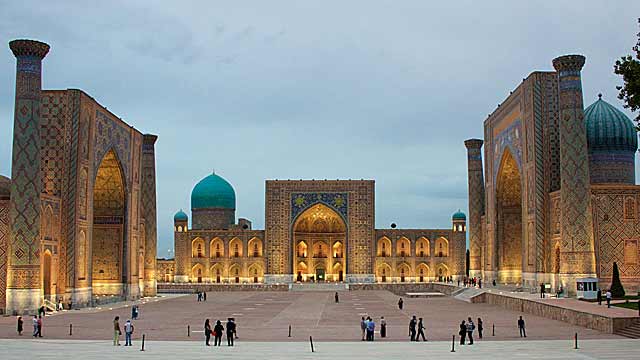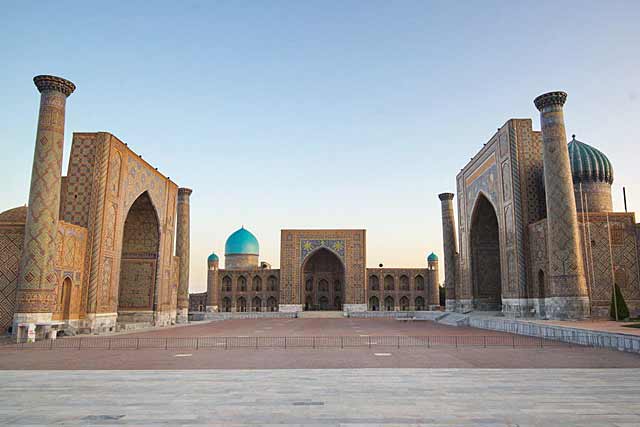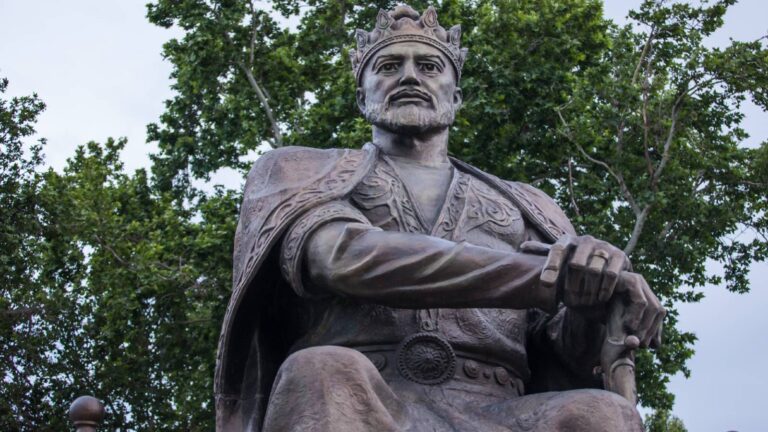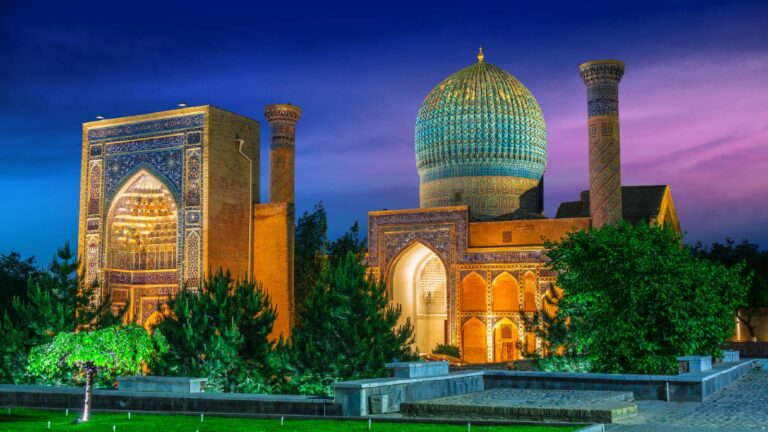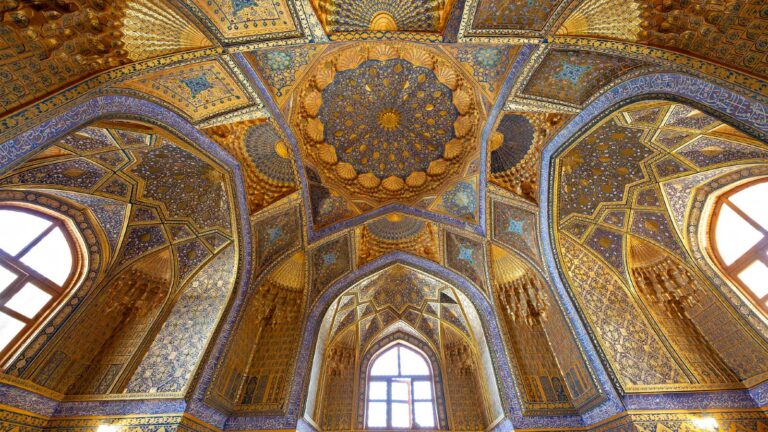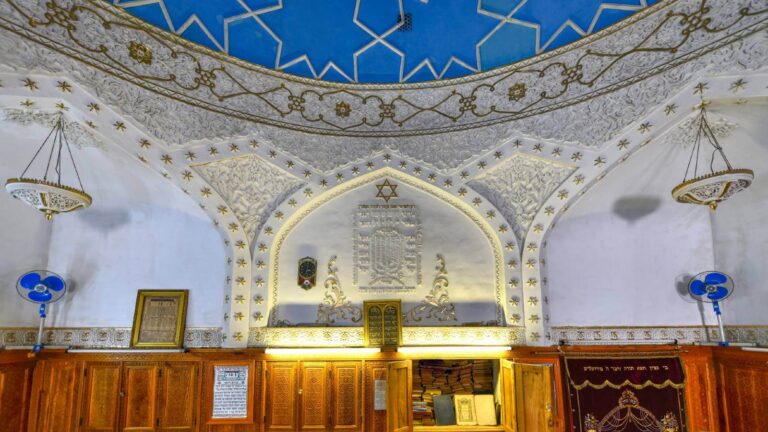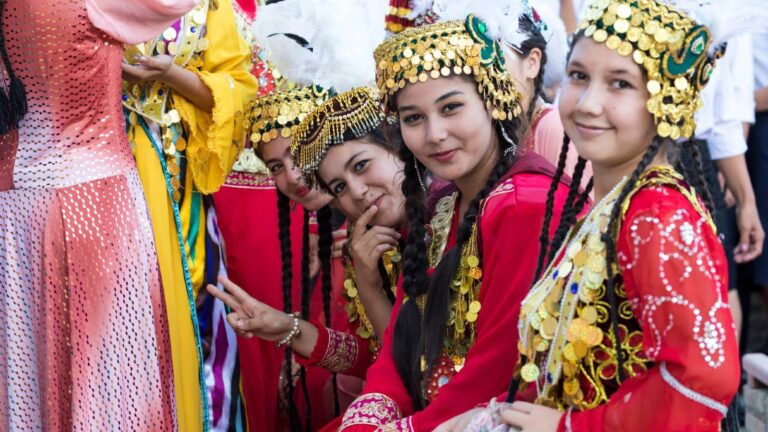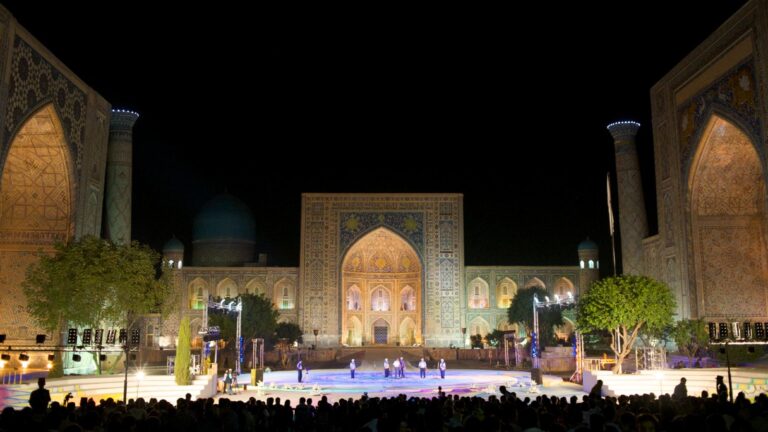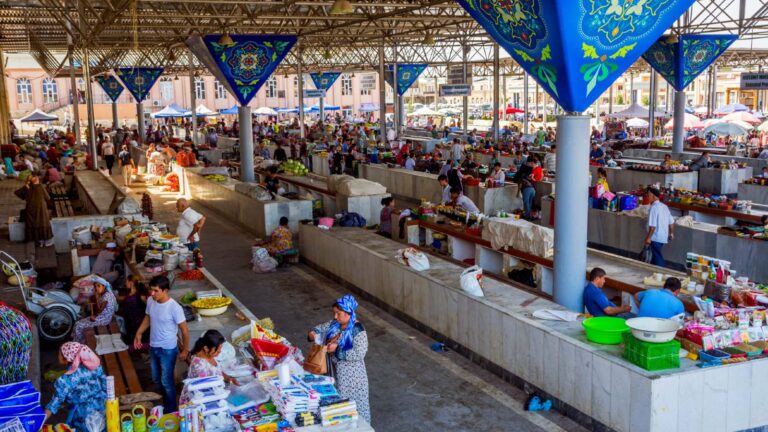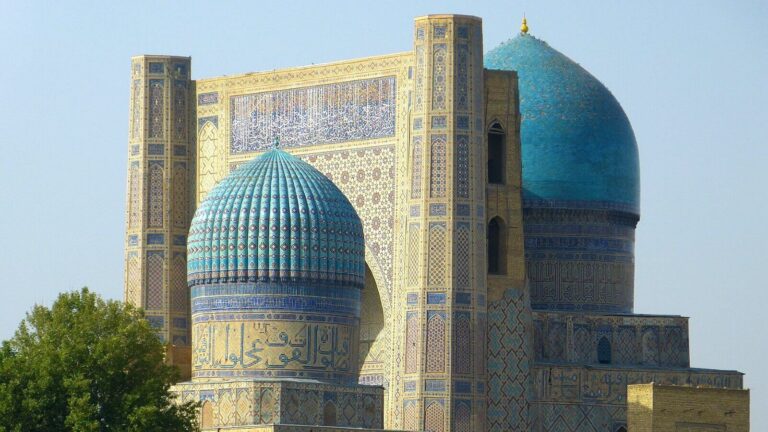Getting There
The Registan is in the heart of Samarkand, and can easily be reached on foot through the pedestrianised thoroughfare, or by mobility scooter for those with reduced mobility.
What to Expect
Visitors can expect to be awe-struck by the grandeur of the medressas’ facades, adorned with intricate tilework and majestic blue domes. Inside, the courtyards are adorned with beautiful mosaics and arches, creating a mesmerising atmosphere.
The medressas have great historical and cultural significance, serving as centres of learning in ancient times. Today, they stand as iconic landmarks and symbols of the city’s rich heritage.
History
The complex dates back to the 15th century when Ulugh Beg, the ruler of the Timurid Empire, commissioned the construction of the first medressa. Ulugh Beg’s Medressa, named after him, became a renowned centre of Islamic education and attracted students from far and wide.
In the 17th century, two more medressas were added to the complex. Tilya-Kori Medressa, meaning “adorned with gold,” was built by Yalangtush Bahadur, the ruler of the Shaibanid dynasty. Sher-Dor Medressa, built by Yalangtush’s grandson, featured unique tiger and lion motifs on its facade, symbolising the power and bravery of the rulers.
During the Soviet era and into independence, the medressas were repurposed for various purposes, such as a museum and exhibition spaces.
Facilities Available
- Samarkand city Public education Department
- Famous Uzbek folk poets statues
- Restaurants
- Rashid Temurov Museum and market

